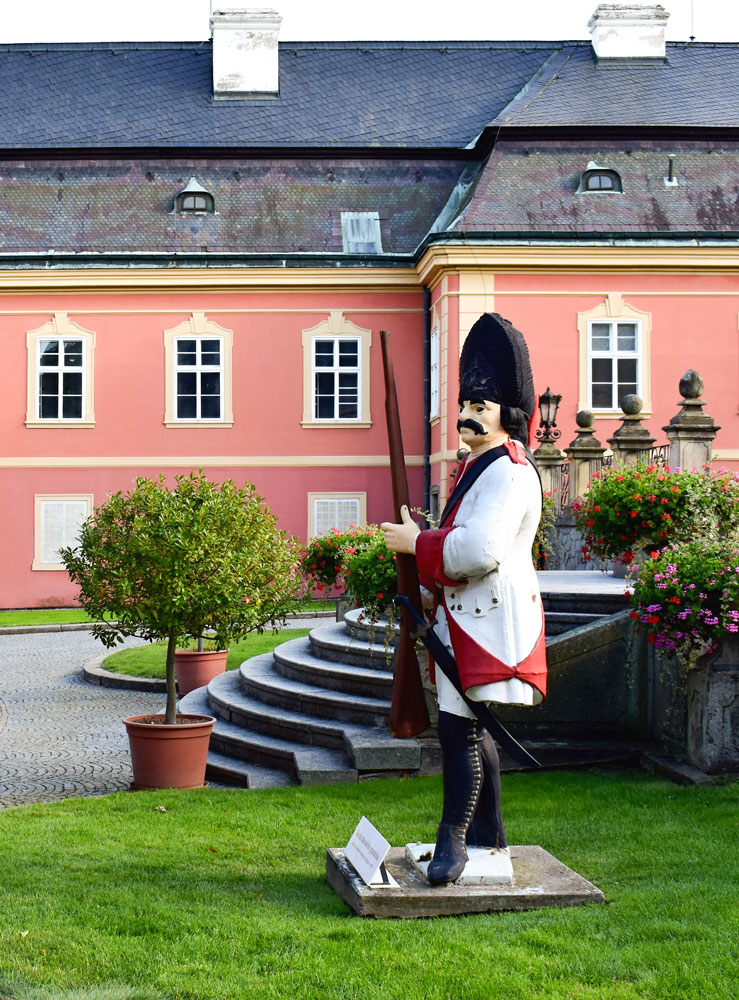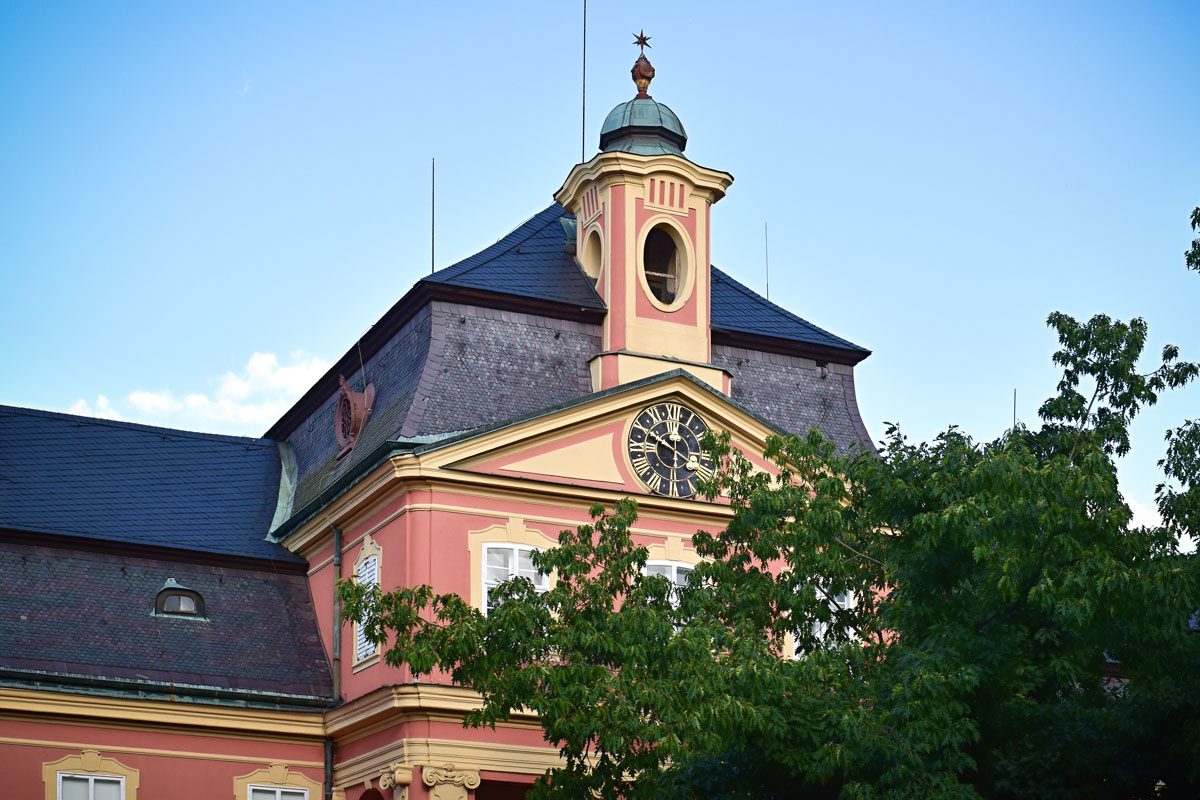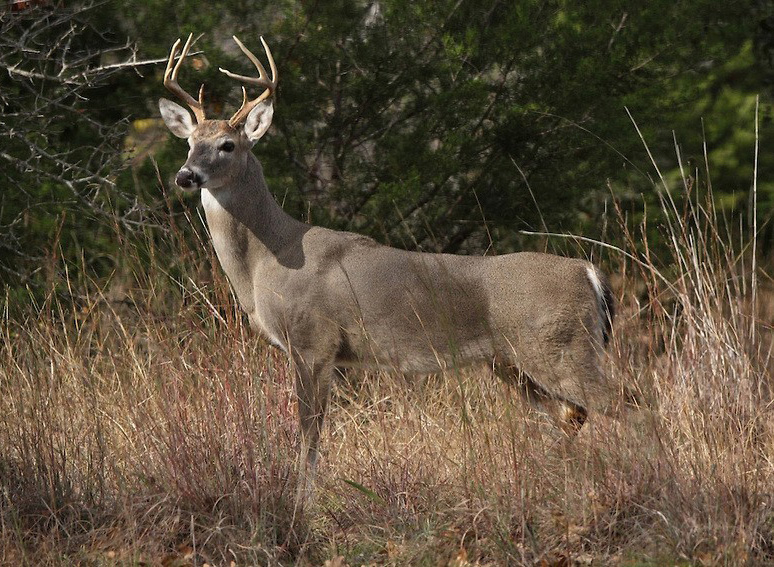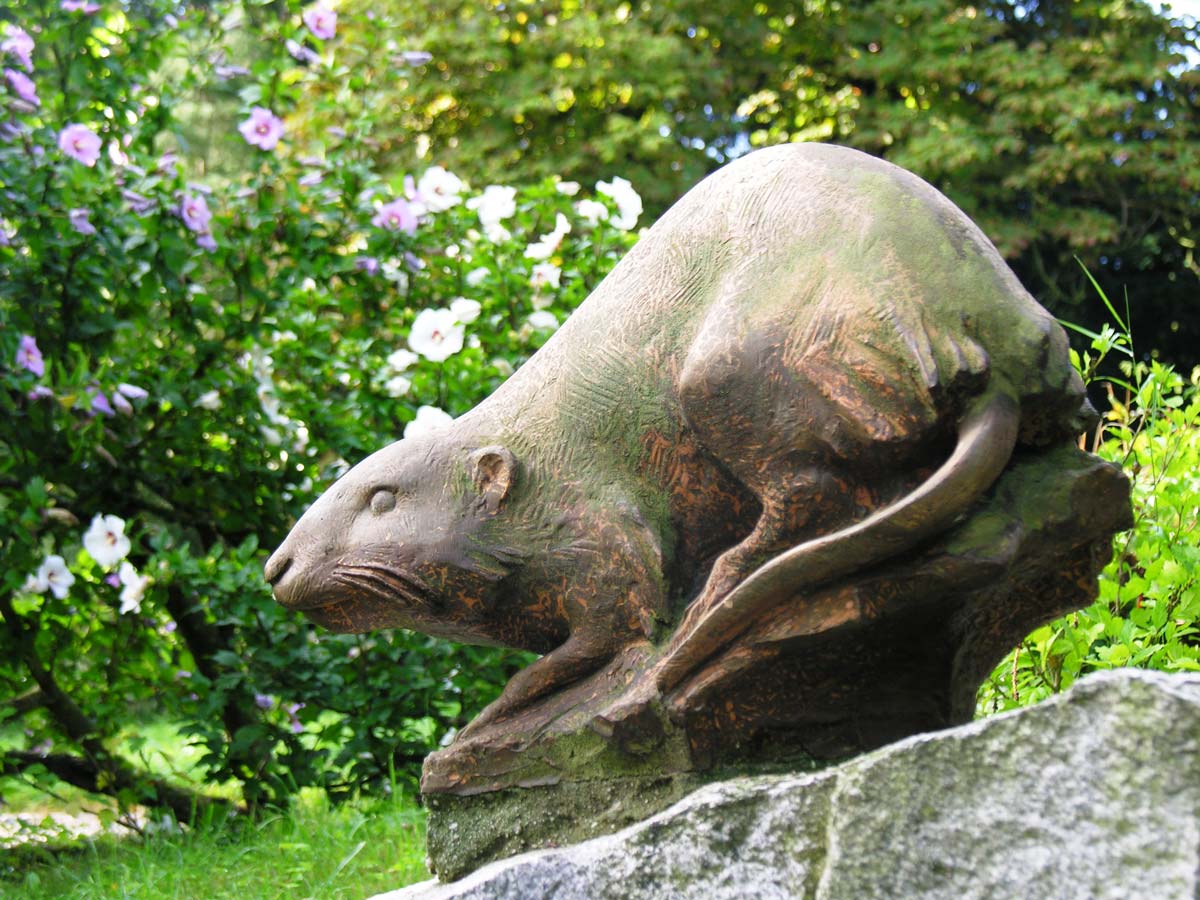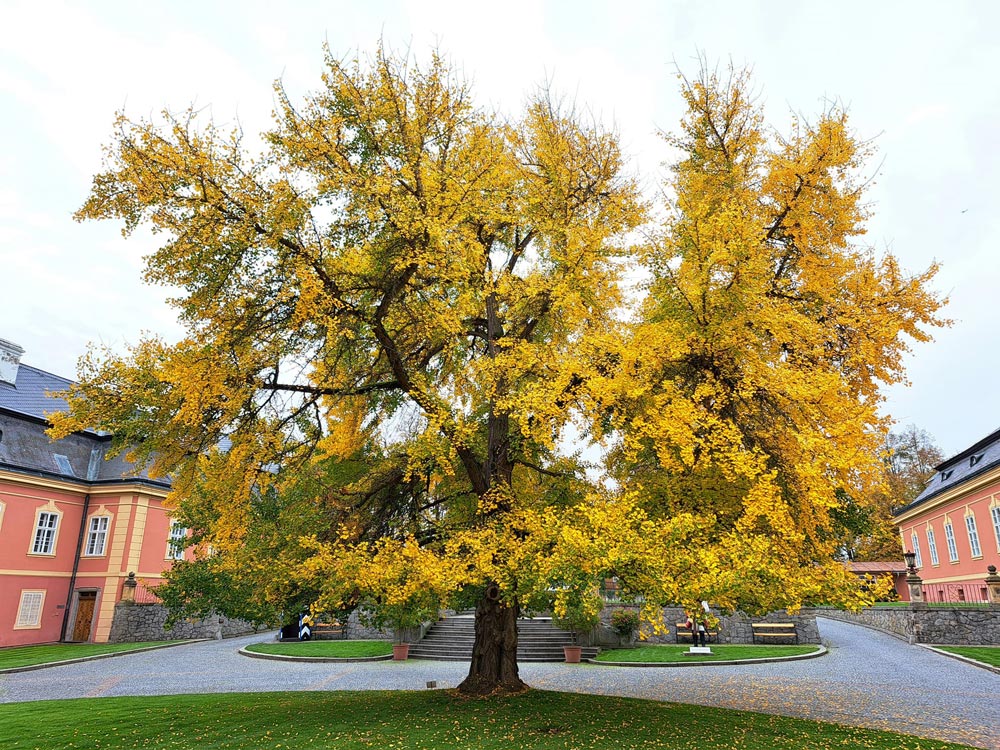Attractions
The Grenadier
The Clock
The clockwork is built on a wooden base in a small room in the attic of the castle. On the top of the movement there is a large dial with baroque decoration. It has the original signature of the builder of the clock and a date written on it:
Ferdinant Londenßberger 1791. brag No 15
Ferdinand Lodensberger, the builder of this clock, was part the renowned Lodensberger family of watchmakers, who in the 18th century produced tower clocks at the highest level of blacksmithing.
The frame of this comparatively large movement is made of steel. On the bottom, at the point where the steel-clad rope drums are placed, it is almost twice as deep as the rest.
The White-Tailed Deer
Prince Josef II Colloredo-Mannsfeld had the white-tailed deer (Virginia deer) brought from North America to his territory in Bohemia around 1853. Besides Finland, the area around Dobříš is the only region in Europe where the white-tailed deer can be found.
The distinctive feature of the white-tailed deer is its forward-facing antlers and the eponymous white tail (“frond”). The doe (female) weighs 40 – 90kg and does not have antlers, while the male weighs between 50 – 100kg and sheds its antlers between January and March.
The summer coat of the deer is short and has a reddish-brown colour, whereas the winter coat is more of a grey-brown colour and longer than in the summer. The lower part of the head, neck and the abdomen is white like the tail, which is 15 to 30cm long with long hair.
When in danger, the deer jump up with all four of their legs and straighten their frond.
White-tailed deer like an environment where forests alternate with fields and meadows.
The rut of Virginia deer takes place in November, the gestation period lasts about 7 months and the doe gives birth to 1-2 cubs that have white spots on their backs and sides.
Like other members of the Cervidae family, white-tailed deer communicate with each other with their fronds.
The Muskrat
Prince Josef II. Colloredo-Mannsfeld brought six pairs of muskrats to Dobříš from a trip to North. From here they spread over all of the European continent.
The muskrat (lat. ondatra zibethicus) is an aquatic mammal, that lives in rivers, ponds and lakes. It builds its burrow on the banks, where it has between 5 and 14 cubs every year.
Muskrats are excellent swimmers and divers. They feed on fish, water plants, mollusks but also carrots, apples and nuts.
The average size of a muskrat is about 30 cm, but it is not unusual for them to grow larger than that. Their fur is brown on the back, the bottom of their bodies is more of a grey tone. Their tail is long and flat and serves as a rudder when swimming. There is a gland close to their genitals from which musk is secreted, to which the muskrat owes its name.
In the past muskrats were hunted for the fur and meat. Today they are no longer hunted in the Czech Republic.
The Writers‘ Bench
The bench dates back to the time when Dobříš Castle served as a work and leisure facility, the so-called Writers’ Home, for the members of the Czech Literature Fund after World War II. Writers stayed here in rooms that all looked the same. Those rooms were assigned to them with vouchers, The length of the stay usually ranged from a week to several months.
The writers did not only have access to the castle, but also to the parks, that were also accessible to the public. People from Dobříš were quite sceptical towards the writer, that lived in the castle. “There’s writers living in the castle now, it’s all downhill from here. They are partying there. Who knows what else is going on in there…“
During the writers’ era many famous personalities came to visit Dobříš Castle and stayed there for a short or a long time.
In the 1960’s for example:
- Pablo Neruda
Chilean poet and diplomat, Nobel laureate (1971) - Jean-Paul Sartre
French essayist, nominated for the Nobel Prize 1964 – denied - Jorge Amado
Brazilian essayist, lived in Czechoslovakia from 1950 to 1952 - E.A. Saudek
interpreter (Shakespeare, Goethe) - Sergej Machonin
critic, interpreter - Jan Otčenášek
author (Občan Brych, Romeo and Juliet and darkness) - Bohuslav Březovský
author, playwright - Josef Kainar
poet, playwright, journalist - Karel Ptáčník
author - Josef Gončár
architect, town planning – city of Hradec Králové
In the 1970’s:
- Oldřich Daněk
playwright, author, director - Oldřich Lipský
director and production designer - Václav Vorlíček
director, production designer, worked with M. Macourek - Miloš Macourek
poet, playwright, production designer - Ladislav Smoljak
director, actor - Zdeněk Svěrák
actor, production designer
Václav Čtvrtek, who came up with the fairy tale of the gallant robber Rumcajs here around 1966, also lived in Dobříš with his parents. Most of the story about Rumcajs takes place in Jičín, the author’s birthplace, but only few people know that Václav Čtvrtek invented many details from the Řáholec Forest based on the landscape in the English Park of Dobříš castle.
The castle also housed the great travellers Jiří Hanzelka and Miroslav Zikmund, who completed their first three-volume book about their journey through Africa, “Africa of dreams and reality”, here, although they were not members of the Communist Writers’ Union.
Jan Drda, a Czech writer and playwright who was a member of the Communist Party of Czechoslovakia and held important cultural and political positions after February 1948, stayed in the writers’ home at Dobříš Castle the longest. From 1949 he was the chairman of the Writers’ Association. He lived in a small apartment on the first floor in the southeastern part of the castle with his family. He rehabilitated himself in the eyes of the critics with a fairytale play, “Dalskabáty – The Sinful Village or The Forgotten Devil” (1959).
The so-called Prague Spring in August 1968 was a severe trauma for Drda. To him it felt like the greatest betrayal, to which he reacted with an uncompromising condemnation. After 1969, he fell out of favour with the regime. On November 28th 1970, his heart failed at the wheel of his car at an intersection in Dobříš and he died on the spot. His funeral was attended by about 2.000 people. Thus, his funeral in the Church of the Holy Cross in Dobříš became a silent protest against the occupying forces.
The highlight of the writers’ work on Dobříš Castle was an international scientific conference on the occasion of the 50th anniversary of the death of the famous Czech writer Karel Čapek. The event took place from the 6th to the 7th December 1988. However, it was the last major event of its kind with international participation at Dobříš Castle. The revolutionary year of 1989 came, and by the time it was over, everything had changed.
Ginkgo Biloba
In the courtyard of the castle there is large, rare ginkgo biloba, a type of tree that belongs to the conifers. It originally comes from south-eastern China and it is known for its healing effects, especially for blood circulation.
It is a representative of a tree family that originated 180 million years ago and is also known as a “living fossil”. The ginkgo biloba was mainly known as an artificially bred tree around temples in Japan.
Dobříš Castle ...
…a matter of the heart
Opening Hours
Dobříš Castle
ZÁMEK DOBŘÍŠ, 263 01 Dobříš
+420 318 521 240
info@zamekdobris.cz
www.zamekdobris.cz
MORE CONTACTS
Hotel Château Dobříš
HOTEL ZÁMEK DOBŘÍŠ, 263 01 Dobříš, CZ
+420 722 710 488
+420 318 586 411
hotel@zamekdobris.cz
GPS: 49.7814817N, 14.1790503E
MORE INFORMATIONS
Colloredo-Mannsfeld spol. s r.o.
263 01 Dobříš č.p. 1 | IČ: 02406781 | DIČ: CZ02406781
